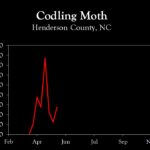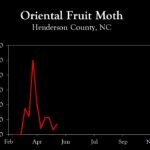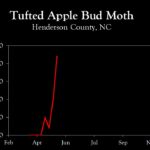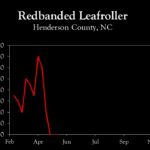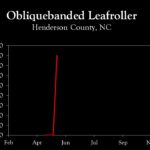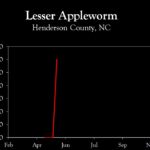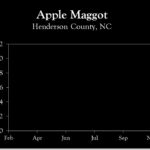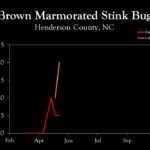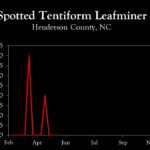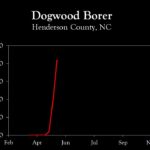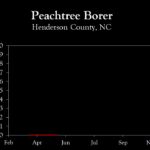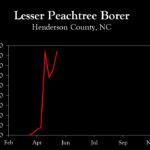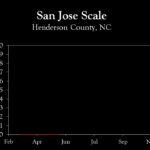WNC Orchard Insect Pest Populations – May 26, 2021
go.ncsu.edu/readext?799219
en Español / em Português
El inglés es el idioma de control de esta página. En la medida en que haya algún conflicto entre la traducción al inglés y la traducción, el inglés prevalece.
Al hacer clic en el enlace de traducción se activa un servicio de traducción gratuito para convertir la página al español. Al igual que con cualquier traducción por Internet, la conversión no es sensible al contexto y puede que no traduzca el texto en su significado original. NC State Extension no garantiza la exactitud del texto traducido. Por favor, tenga en cuenta que algunas aplicaciones y/o servicios pueden no funcionar como se espera cuando se traducen.
Português
Inglês é o idioma de controle desta página. Na medida que haja algum conflito entre o texto original em Inglês e a tradução, o Inglês prevalece.
Ao clicar no link de tradução, um serviço gratuito de tradução será ativado para converter a página para o Português. Como em qualquer tradução pela internet, a conversão não é sensivel ao contexto e pode não ocorrer a tradução para o significado orginal. O serviço de Extensão da Carolina do Norte (NC State Extension) não garante a exatidão do texto traduzido. Por favor, observe que algumas funções ou serviços podem não funcionar como esperado após a tradução.
English
English is the controlling language of this page. To the extent there is any conflict between the English text and the translation, English controls.
Clicking on the translation link activates a free translation service to convert the page to Spanish. As with any Internet translation, the conversion is not context-sensitive and may not translate the text to its original meaning. NC State Extension does not guarantee the accuracy of the translated text. Please note that some applications and/or services may not function as expected when translated.
Collapse ▲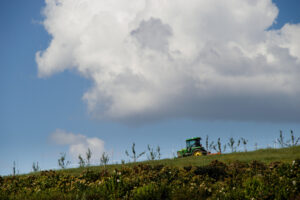 May 25, 2021
May 25, 2021
As has been the case for the past several weeks, codling moth remains the greatest threat throughout the region, although low populations make the risk of damage low in many orchards. Now is also a good time to begin scouting for secondary pests, including European red mite, aphids and leafhoppers.
Codling moth: Degree-day accumulations range from about 400 in Henderson County to 650 in Lincoln/Cleveland County. In the lower elevation orchards (i.e., Lincoln/Cleveland), first generation flight should decline over the next week or so. In Henderson County (and orchards at a similar elevation of about 2000 ft), we will be entering the main flight and egg-laying period of the first generation. In orchards being managed as if full crop, the next 7 to 10 days will be an important time to monitor populations, or apply an insecticide if not monitoring.
In lower elevations where tufted apple bud moth (TABM) is a concern, an insecticide applied anytime during the next two weeks is good timing. In Henderson County, the window for control of TABM will not begin for another 7 to 14 days.
Secondary Pests: While it may seem early for European red mite, in orchards with high populations it is not unusual for mites to be observed by late May. We are also on the early side of potato leafhopper and green apple aphids, but a few leafhoppers, although too low to justify treating, were observed in our plots yesterday. Finally, in our research plots where rosy apple aphid (RAA) was not controlled early in the spring, aphids are continuing to spread. If RAA-curled leaves are observed in orchards, these leaves should be checked for the presence of live aphids. As temperatures warm, RAA populations will decline.
Learn more about southeastern apple insect pests at the Apple Insect Management page.
2021 Average Weekly Trap Captures
| HENDERSON COUNTY | |||
| Insects per trap | |||
| May 10 | May 17 | May 24 | |
| Codling moth | 4.5 | 2.5 | 5.5 |
| Oriental fruit moth | 11.5 | 3.0 | 7.0 |
| Tufted apple bud moth | 2.0 | 10.0 | 22.0 |
| Redbanded leafroller | 0.0 | 0.0 | 0.0 |
| Obliquebanded leafroller | 0.0 | 0.0 | 8.0 |
| Lesser appleworm | 0.0 | 0.0 | 12.0 |
| Apple maggot (abandoned and research orchards) | – | – | set |
| Brown marmorated stink bug (commercial) | – | 1.0 | 2.0 |
| Brown marmorated stink bug (unsprayed) | 1.0 | 0.5 | 0.5 |
| Spotted tentiform leafminer | 0.0 | 0.0 | 0.0 |
| Dogwood borer | 1.0 | 10.0 | 21.0 |
| Peachtree borer | 0.0 | 0.0 | 0.0 |
| Lesser peachtree borer | 29.0 | 33.0 | 42.0 |
| San Jose scale | 0.0 | 0.0 | 0.0 |
*Note that these averages illustrate only the timing of insect emergence and fluctuations in populations, and are not representative of population levels in any given orchard. The only way to have an accurate assessment of an individual orchard’s populations is to set up traps in that orchard.
2021 Accumulated Degree Days
| HENDERSON COUNTY | ||||
| May 10 | May 17 | May 24 | ||
| Codling moth (Biofix: April 10) |
243 | 298 | 395 | |
| Oriental fruit moth (Biofix: March 27) |
467 | 550 | 681 | |
| Tufted apple bud moth (Biofix: April 30) |
108 | 191 | 323 | |
2021 Pest Trends (click to enlarge)
Visit WNC Orchard Insect Populations for archived posts.
Additional Resources
- Apple Insect Management Overview
- How to Monitor Apple Insect Pests (IPM)
- Brown Marmorated Stink Bug in North Carolina
- Integrated Orchard Management Guide for Commercial Apples in the Southeast
- Walgenbach Entomology Lab



